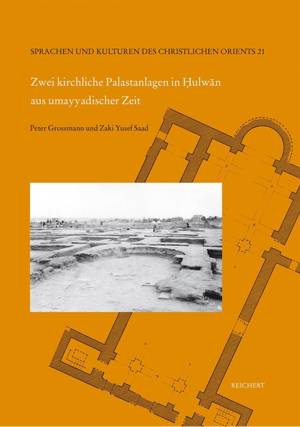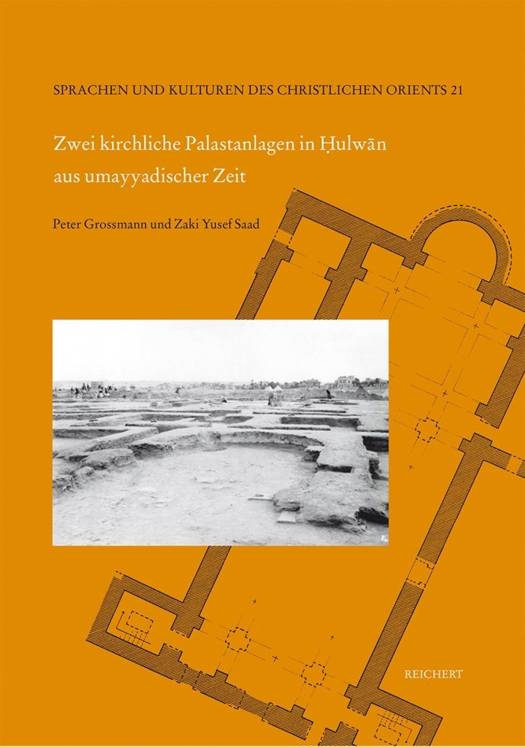
- Retrait gratuit dans votre magasin Club
- 7.000.000 titres dans notre catalogue
- Payer en toute sécurité
- Toujours un magasin près de chez vous
- Retrait gratuit dans votre magasin Club
- 7.000.0000 titres dans notre catalogue
- Payer en toute sécurité
- Toujours un magasin près de chez vous
Zwei Kirchliche Palastanlagen in Hulwan Aus Umayyadischer Zeit
Grabungen Der Egyptian Antiquities Organization in Den Jahren 1948 Bis 1949
Peter Grossmann, Zaki Yusef Saad
167,95 €
+ 335 points
Description
English summary: The book deals with the publication of two late antique or early Christian building complexes which according to their shapes and records in the sources are interpreted as two ecclesiastical palace buildings. They are both not anymore existing, but thanks to the carefully produced survey records of the buildings at least the floor plans on paper could be re-gained. Both palaces date to the tolerant Arab governor Abdal Aziz ibn Marwan (A.D. 685-705) and give thus an idea how an ecclesiastical palace at the end of the late antiquity would have looked like. They contained living quarters, churches, each a large reception hall or dining-room etc. and demonstrate in this way that during the Umayyade time the erection of churches was still not principally forbidden. But on the other hand both palaces offer only an uncomplete picture of the architecture during the period of the late antiquity. Examples of the earlier period have been still not discovered. They stay thus at the threshold from the classical antiquity to the Byzantine Middle Ages. Until the middle of the 8th century the Christian architecture in Egypt followed still the tradition of the local examples as it becomes obvious in the two triconchoi. After this date, however, the architecture became Byzantine. Small churches came into being with cruciform floor plans and four-pillar churches of similar sizes or the spatial a bit larger octagon-domed churches in which the central dome rested on eight pillars. Examples of the latter are to be found nearly exclusively in Greece. Only from the region of Aswan in Egypt some further examples are known. German description: Das vorliegende Buch ist die Veroffentlichung einer vom agyptischen Antikendienst (EAO) in den Jahren 1948/49 durchgefuhrten Ausgrabung zweier bischoflicher Palastanlagen in Hilwan, der unter dem arabischen Gouverneur Abdal Aziz ibn Marwan (685-705 n.Chr.) in Planung befindlichen neuen islamischen Hauptstadt Agyptens, und bildet damit einen wichtigen Beitrag zur Kenntnis der spatantiken, fruhchristlichen Architektur Agyptens. Beide Monumente existieren nicht mehr, konnten jedoch nach Tagebuchnotizen, detaillierten Planskizzen und zahlreichen Fotografien wenigstens auf dem Papier wiederhergestellt werden. Beide Palaste reprasentieren die zivile, nicht unmittelbar kirchliche Architektur in Agypten und wurden um die Jahrhundertwende vom 7. zum 8. Jahrhundert erbaut. Sie stammen damit aus der letzten Phase der Spatantike und vermogen damit nur ein sehr unvollkommenes Bild dieser Epoche zu bieten. Sie stehen damit an der Schwelle von der klassischen Antike zum byzantinischen Mittelalter. Es entstehen kreuzformige Kleinkirchen und ahnlich geartete Vierstutzenbauten, die es vorher nicht gegeben hat. Eine besondere Leistung sind die etwas grosseren Achtstutzenbaute n, die fast ausnahmslos nur in Griechenland verbreitet sind. Lediglich in Agypten, im Gebiet von Aswan gibt es ein paar Reprasentanten dieses Typus.
Spécifications
Parties prenantes
- Auteur(s) :
- Editeur:
Contenu
- Nombre de pages :
- 200
- Langue:
- Allemand
- Collection :
- Tome:
- n° 21
Caractéristiques
- EAN:
- 9783954901135
- Date de parution :
- 20-06-17
- Format:
- Livre relié
- Format numérique:
- Genaaid
- Dimensions :
- 173 mm x 247 mm
- Poids :
- 607 g

Les avis
Nous publions uniquement les avis qui respectent les conditions requises. Consultez nos conditions pour les avis.






